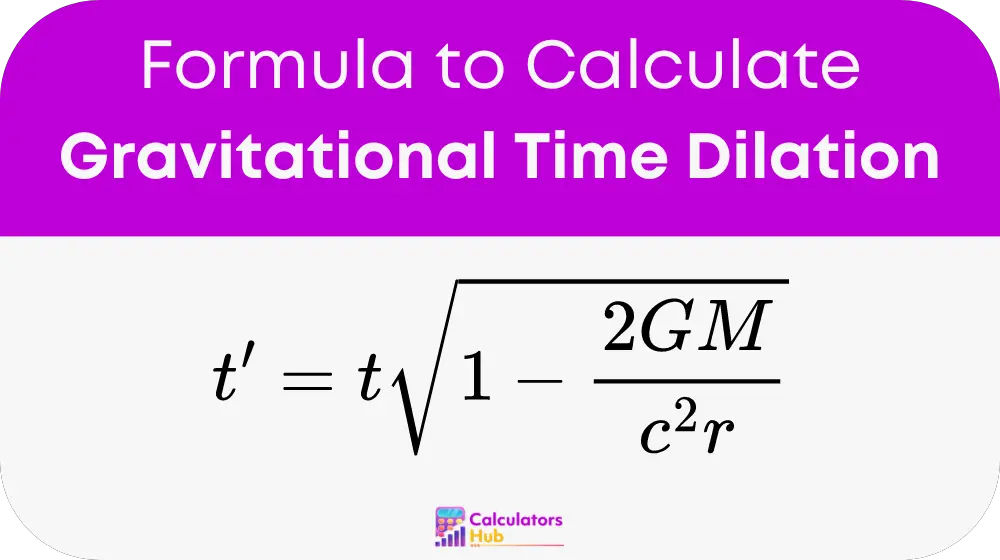This calculator helps users compute the time experienced differently by observers at various gravitational potentials. It’s an essential tool for anyone studying physics, space, or related fields, offering a practical application of theoretical knowledge.
Formula of Gravitational Time Dilation Calculator
The heart of our calculator is the formula:

Where each component has a critical role:
- t’: Time perceived by an observer in a lower gravitational field.
- t: Time according to an observer away from significant gravitational forces.
- G: The universal gravitational constant, crucial for calculating gravitational forces.
- M: Mass of the celestial body creating the gravitational effect.
- c: Constant speed of light, pivotal in all relativistic calculations.
- r: Distance from the mass’s center, affecting gravitational pull intensity.
Table of General Terms and Calculator Conversions
| Term | Description | Value or Example Use |
|---|---|---|
| Gravitational Constant (G) | Constant used to calculate gravitational forces | 6.67430 x 10^-11 m^3 kg^-1 s^-2 |
| Mass of the Body (M) | Mass of the celestial body exerting the gravitational pull | Typically in kilograms (kg) |
| Speed of Light (c) | Constant speed at which light travels in a vacuum | 299,792,458 m/s |
| Radial Distance (r) | Distance from the center of mass to the observer | Typically in meters (m) |
| Proper Time (t) | Time experienced by an observer at a higher gravitational potential | Time interval (e.g., seconds, minutes) |
| Dilated Time (t’) | Time experienced by an observer at a lower gravitational potential | Calculated using the formula |
Example of Gravitational Time Dilation Calculator
Imagine an astronaut orbiting around a massive neutron star, which is much denser and has a stronger gravitational field than Earth. Let’s calculate how much one hour on this neutron star would appear from Earth using the gravitational time dilation calculator:
- Mass of the neutron star (M): 2.8 x 10^30 kilograms (approximately 1.4 times the mass of the sun)
- Distance from the neutron star’s center (r): 30,000 kilometers (which is a relatively close orbit)
- Time experienced on Earth (t): 1 hour (or 3600 seconds)
Using the formula:
t’ = t * sqrt(1 – (2 * G * M) / (c^2 * r))
Inserting the values:
- G (gravitational constant) = 6.67430 x 10^-11 m^3 kg^-1 s^-2
- c (speed of light) = 299,792,458 m/s
Plugging these into the formula will give the time dilation experienced by the astronaut compared to the time as observed from Earth.
Most Common FAQs
Gravitational time dilation occurs when time is perceived at different rates in areas of different gravitational potential.
It allows us to calculate the precise effect of gravity based on mass and distance, which is fundamental to predicting how time dilation occurs.
It’s a practical tool for demonstrating real-life applications of theoretical physics, helping students visualize and understand complex concepts in relativity.